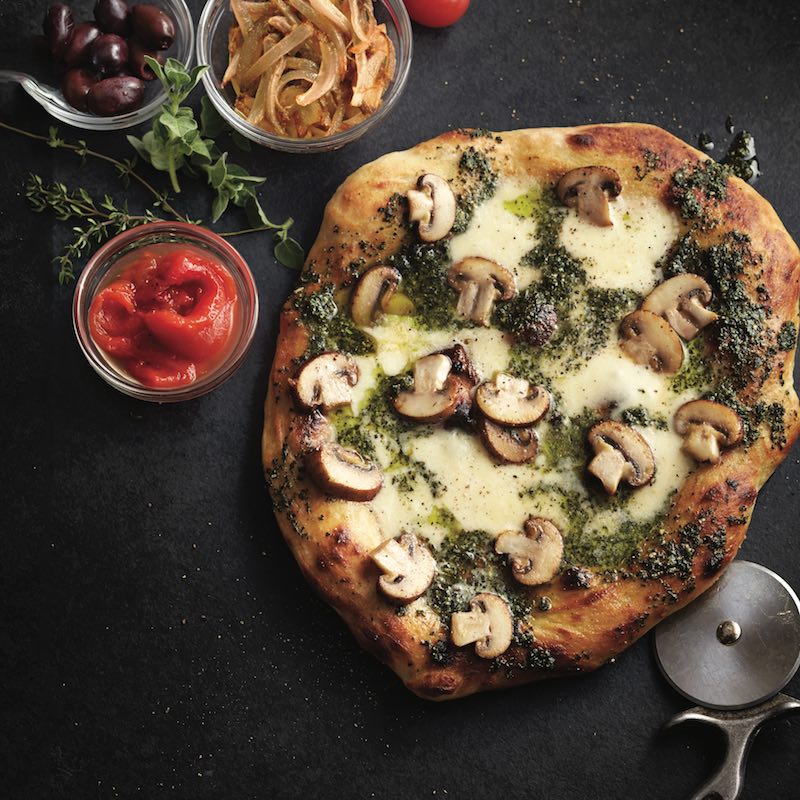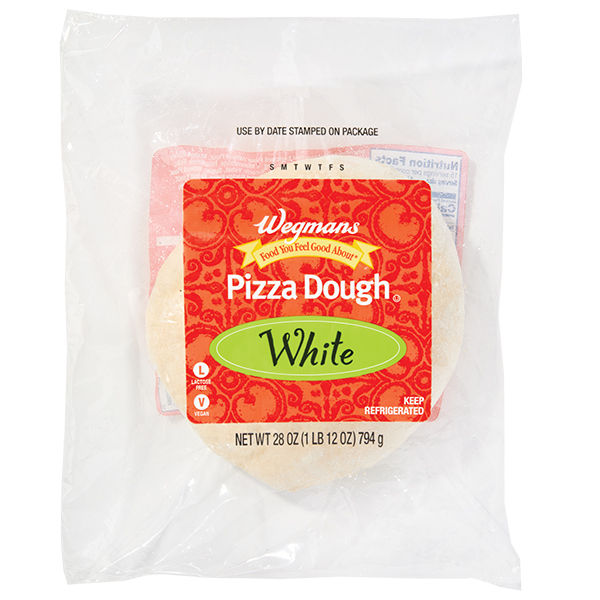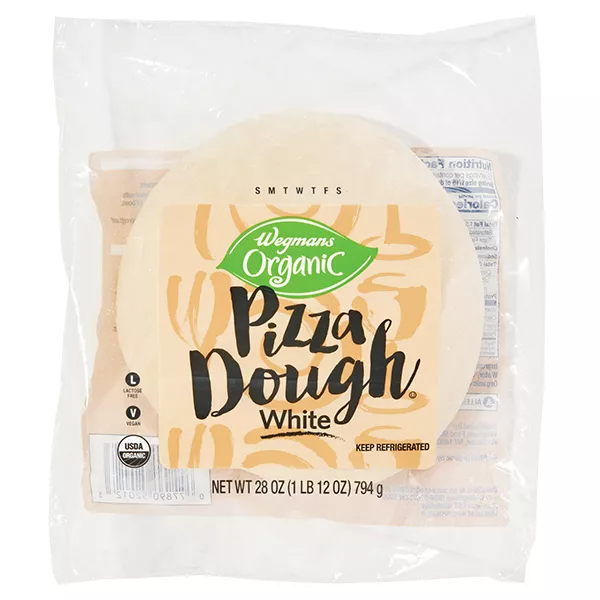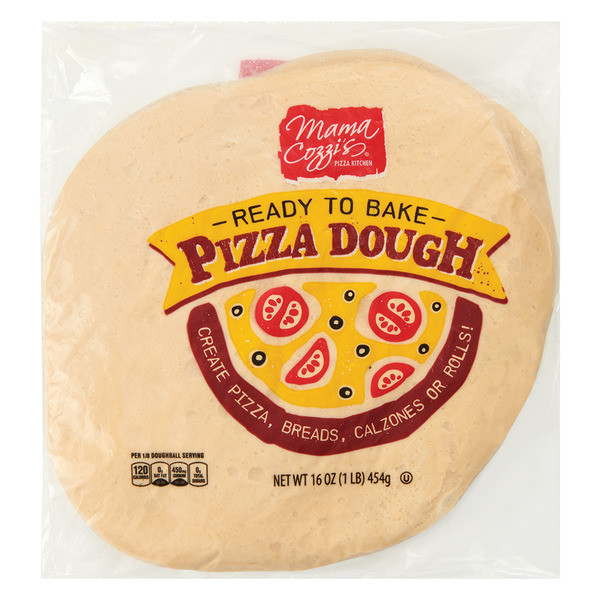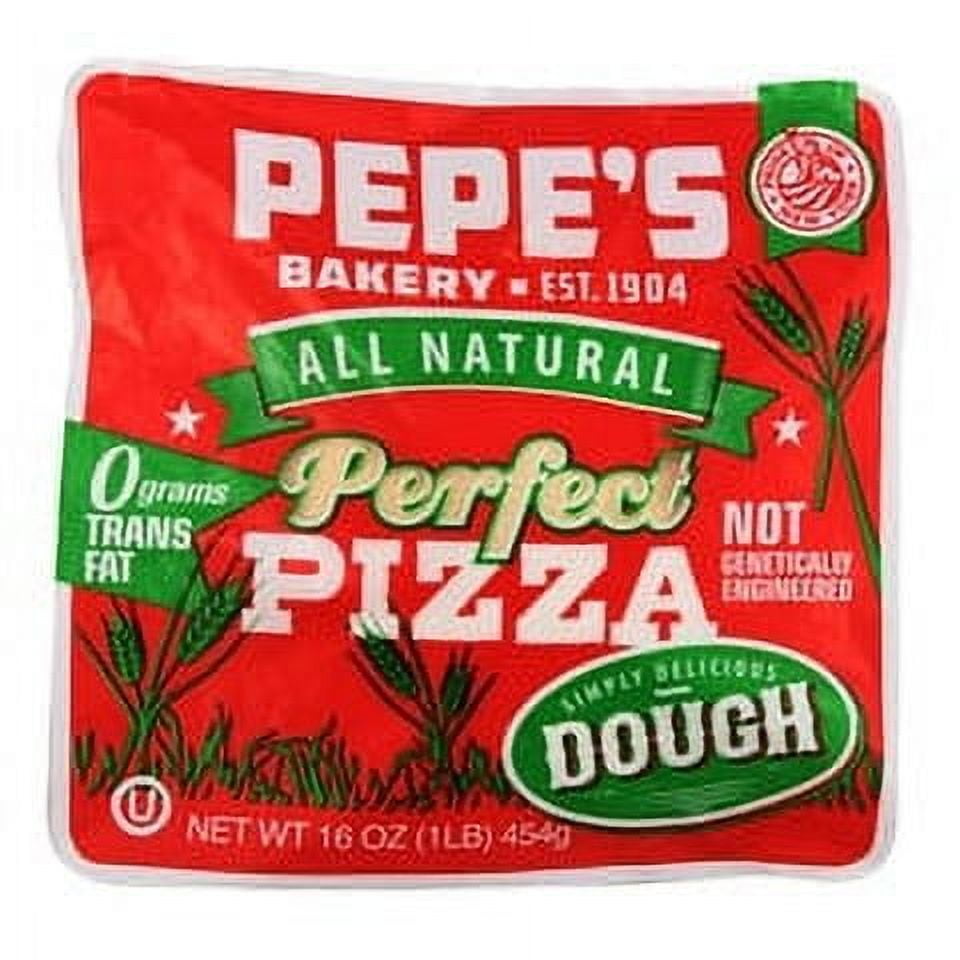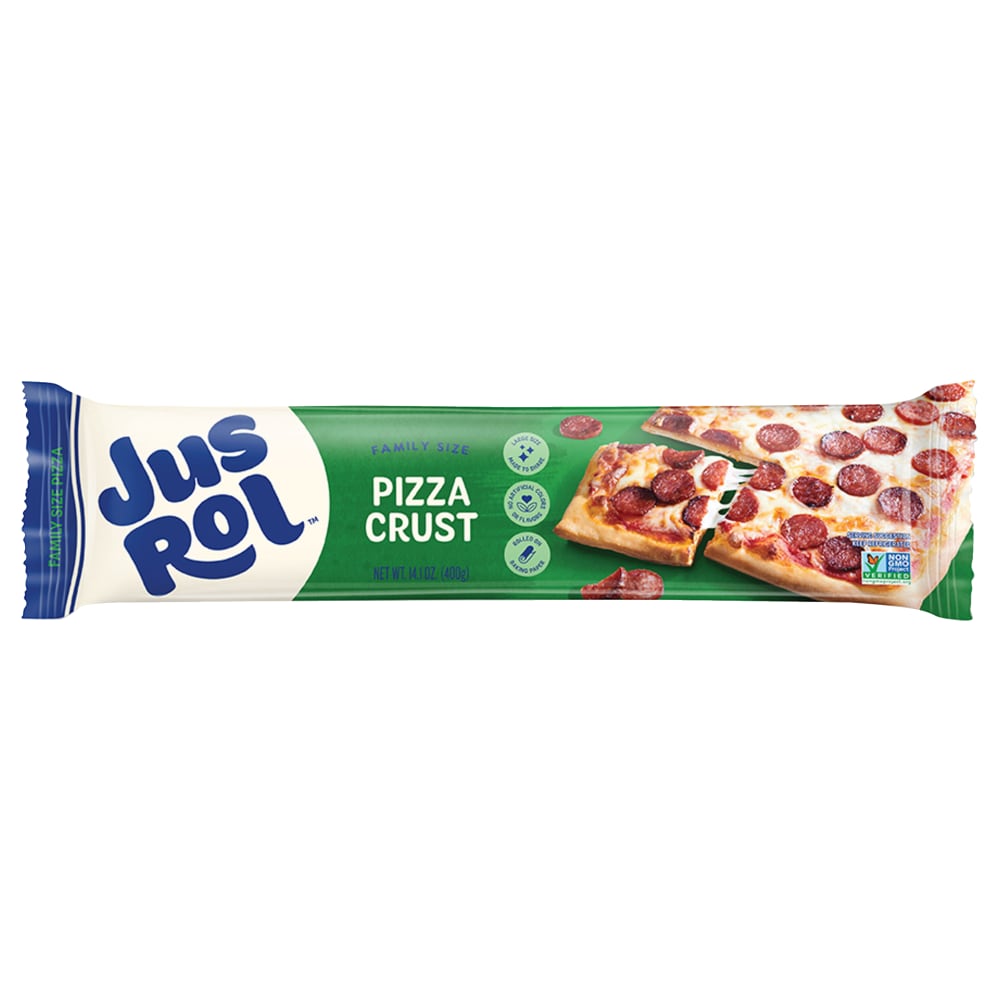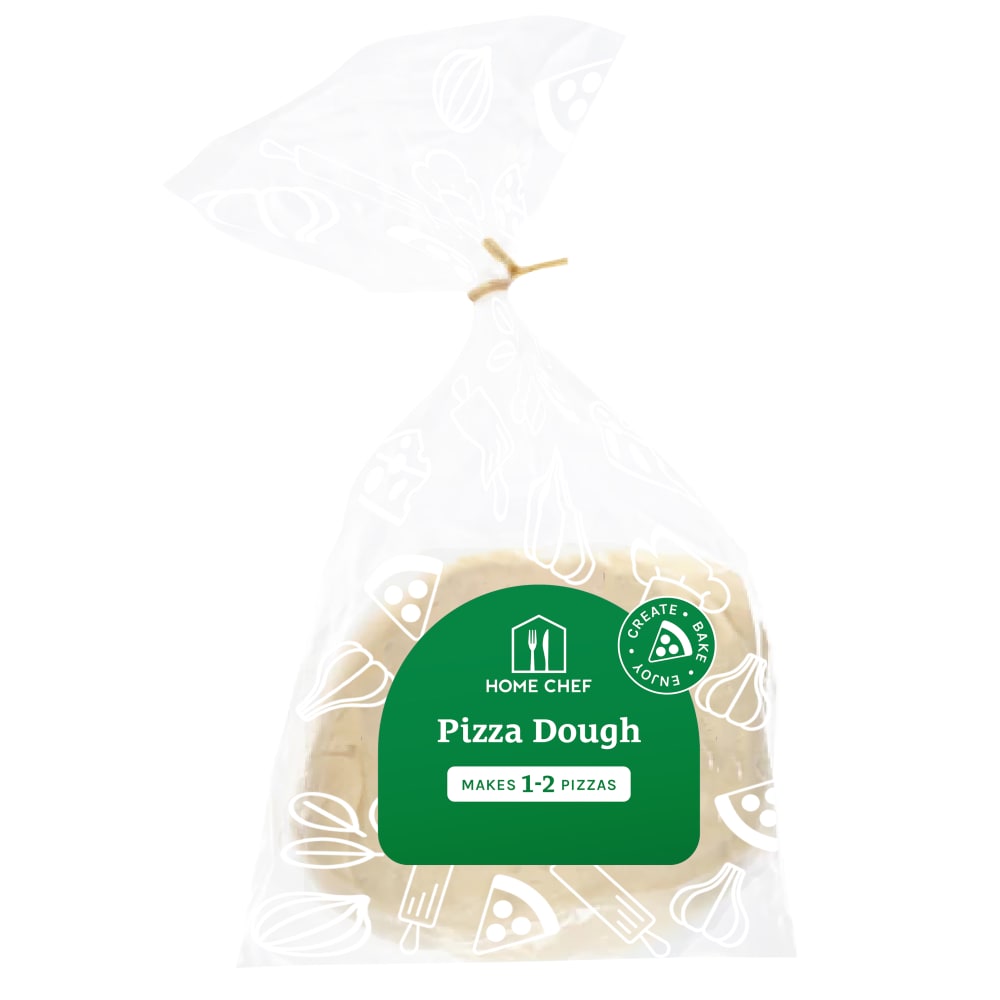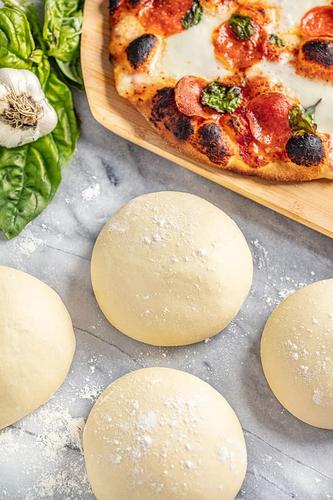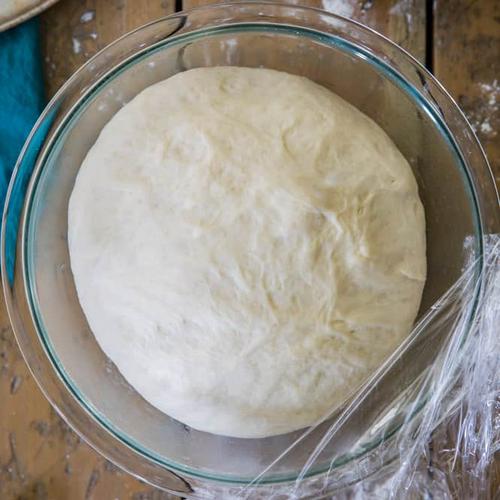Pizza Dough
Pizza dough is a versatile and essential component in making the popular Italian dish, pizza. It serves as the foundation for various toppings, from classic tomato sauce and cheese, to fresh herbs and gourmet ingredients. Pizza dough primarily consists of all-purpose or bread flour, water, yeast, salt, and occasionally other enriching ingredients such as sugar or olive oil, which adds a subtle flavor and soft texture.
To prepare pizza dough, the ingredients are mixed and kneaded until they form an elastic and stretchable consistency. The dough is then allowed to rise or ferment, which helps in developing a richer taste, desirable texture, and aids in achieving a perfectly crisp crust when baked. Ready-made pizza dough is widely available at grocery stores, making it a convenient option for home cooks in creating their customized pizzas.
87%
CARBS
2%
FAT
11%
PROTEIN
374 Pizza Dough Products
Wegmans White Pizza Dough
Pillsbury Classic Pizza Crust Dough
Wegmans Organic White Pizza Dough
Papa Sal's Original Pizza Dough
Mama Cozzi's Pizza Kitchen Pizza Dough
Jus-Rol Family Size Pizza Crust Pre-Rolled Dough, 1ct
Pepe's Bakery Pizza Dough
Publix Bakery Pizza Dough
Jus-Rol Large Family Size Pizza Crust Dough
Home Chef Pizza Dough
20 Recipes for Pizza Dough
3
Fabulous Quinoa Pizza Crust (Vegan, Gluten-Free)
4
Crispy & Chewy Gluten-Free Pizza Crust
2
Perfect 10-Minute Classic Pizza Dough
31
Italian Style Pizza Dough
2,423
The Best Pizza Dough Recipe
63
Easy Miracle Pizza Dough
8
5 Minute Prep Easy Pizza Dough Recipe
79
Gluten Free Pizza Dough
Used In 126 Recipes
Pizza Dough Is Frequently Used With
Pizza Dough FAQ
Pizza dough, typically made from flour, yeast, water, salt, and sometimes additional flavor enhancers, is the base of any pizza and can significantly determine its overall taste and texture. People often struggle with achieving a crisp bottom, an airy, well-structured interior, and a sought-after flavor. This is generally due to insufficient understanding of yeast, failing to let the dough rise sufficiently, or not handling the dough correctly.
To get the most out of your pizza dough, remember to proof it properly. A good rise helps create the perfect texture. Fluffy, airy, and with a good chew, your dough will reach its full potential with the right proofing process. Always use warm water to activate the yeast. Let the dough rise until it doubles in size for a light, airy crust.
Kneading the dough contributes significantly to the end result. Under-kneading can leave you with a flat and tough crust, while over-kneading can cause the dough to become too tough.
Here’s a tip: Adding a bit of sugar or honey can help your crust achieve a beautiful golden brown color when baked. For a more gourmet feel, using bread flour instead of all-purpose flour can add an extra level of chewiness and structure to your pizza dough.
Remember, practice makes perfect. Pizza dough is all about feel and getting a sense of how the dough should be at every stage requires time and practice. Well-made pizza dough can indeed make your homemade pizza rival those of fancy pizzerias!
Can I use all-purpose flour for pizza dough?
Why is my pizza dough not rising?
How long should pizza dough rise for the best results?
Why is my pizza dough tough?
Why is my pizza crust not crispy?
Can I freeze my pizza dough?
Do I need to oil my pizza dough before baking?
Can I prepare pizza dough without yeast?
What if I don’t have a pizza stone?
How thin should I stretch my pizza dough?
Expiration & Storage Tips
When does pizza dough expire?
Unopened store-bought pizza dough typically lasts for about a week beyond its printed date when stored in the refrigerator. Once opened, it should be used within 3 to 5 days. If the dough is homemade, it will last about 48 hours in the refrigerator. When it's frozen, whether store-bought or homemade, pizza dough can last up to three months.
How do you tell if pizza dough is bad?
One of the first indicators that pizza dough has gone bad is a sour smell, often similar to beer. As dough begins to spoil, you may also notice mould forming, which will appear as fuzzy spots in different colors. Dough that seems unusually slimy to the touch is another sign that it should not be consumed. Furthermore, if you find your dough has become too tough or does not spring back when lightly pressed, it might be past its prime.
Tips for storing pizza dough to extend shelf life
• Always keep pizza dough in the refrigerator when not in use.
• For longer storage, make sure to freeze the dough. Before freezing, divide the dough into the amount needed for each pizza, wrap it tightly in plastic wrap, and then put it in a resealable freezer bag.
• When ready to use frozen dough, place it in the refrigerator for at least 12 hours to thaw. Never try to speed up the process by thawing it at room temperature, as this could cause the dough to over-proof.
• If using soon, store-bought or homemade dough can be left out to rise at room temperature, but keep a close eye on it so that it doesn’t over-proof. It should be used within an hour or so of rising.
• Avoid putting dough next to strong-smelling foods in the refrigerator, as it tends to absorb odors.
EXPIRES WITHIN
6 - 11
WEEKS
Equivalents
Substitutes

Wheat Pizza Dough

Cauliflower Pizza Crust

Pizza Crust Mix

Grain Free Pizza Crust Mix

Gluten Free Pizza Crust Mix

Thin Pizza Crust
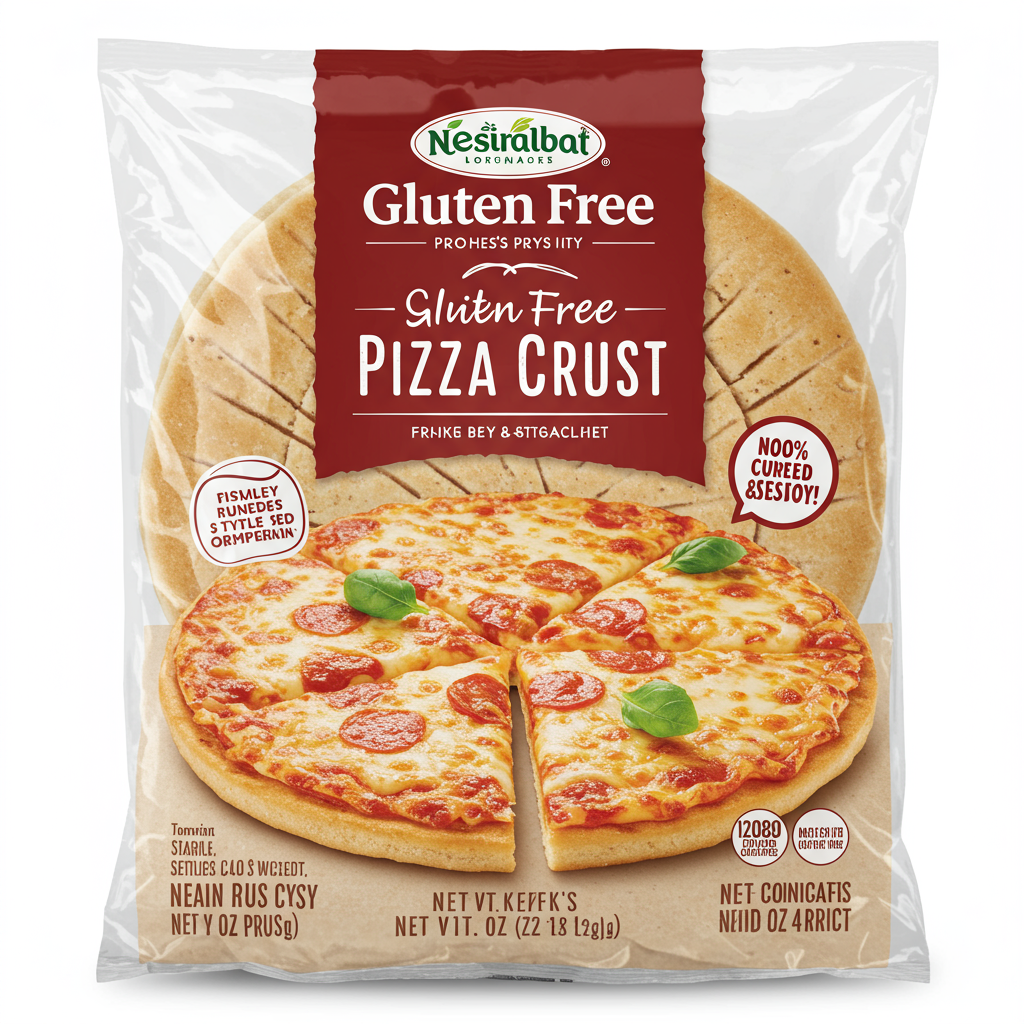
Gluten Free Pizza Crust

Flatbread Pizza Crust

Multigrain Pizza Crust

Pizza Crust
See All
Health Info
Macros
209g
CARBS
4g
FAT
27g
PROTEIN
Allowed on these diets
LOW FAT
HIGH CALCIUM
VEGETARIAN
VEGAN
LACTOSE FREE
Contains these allergens
WHEAT

